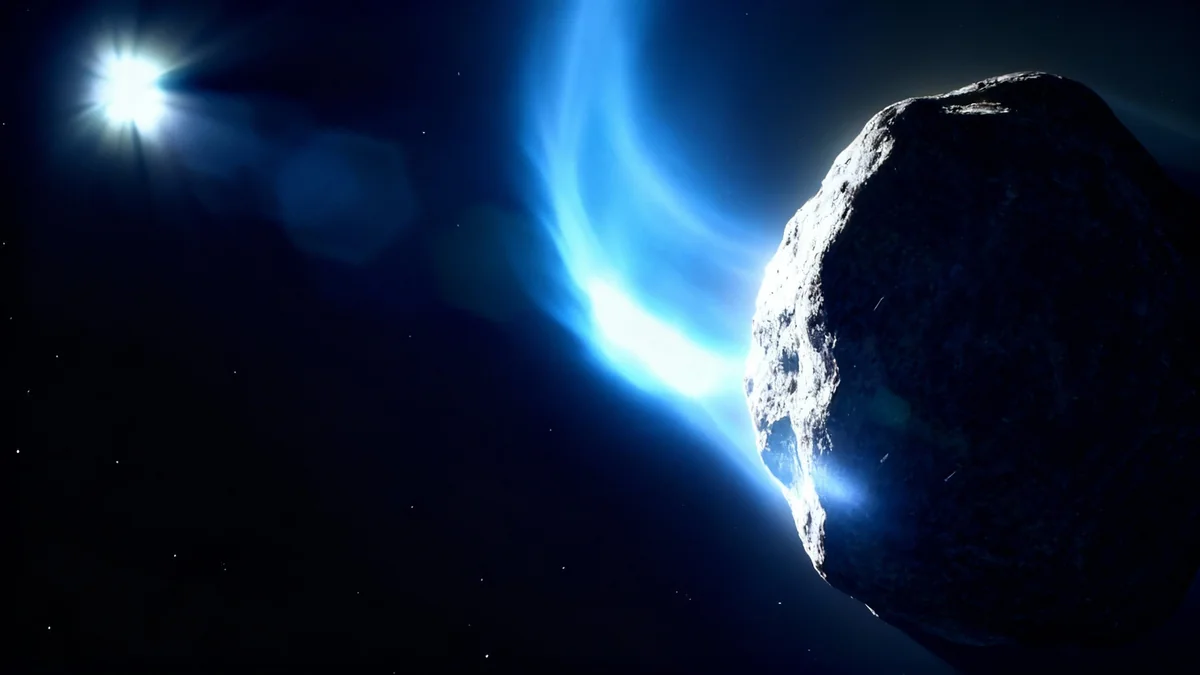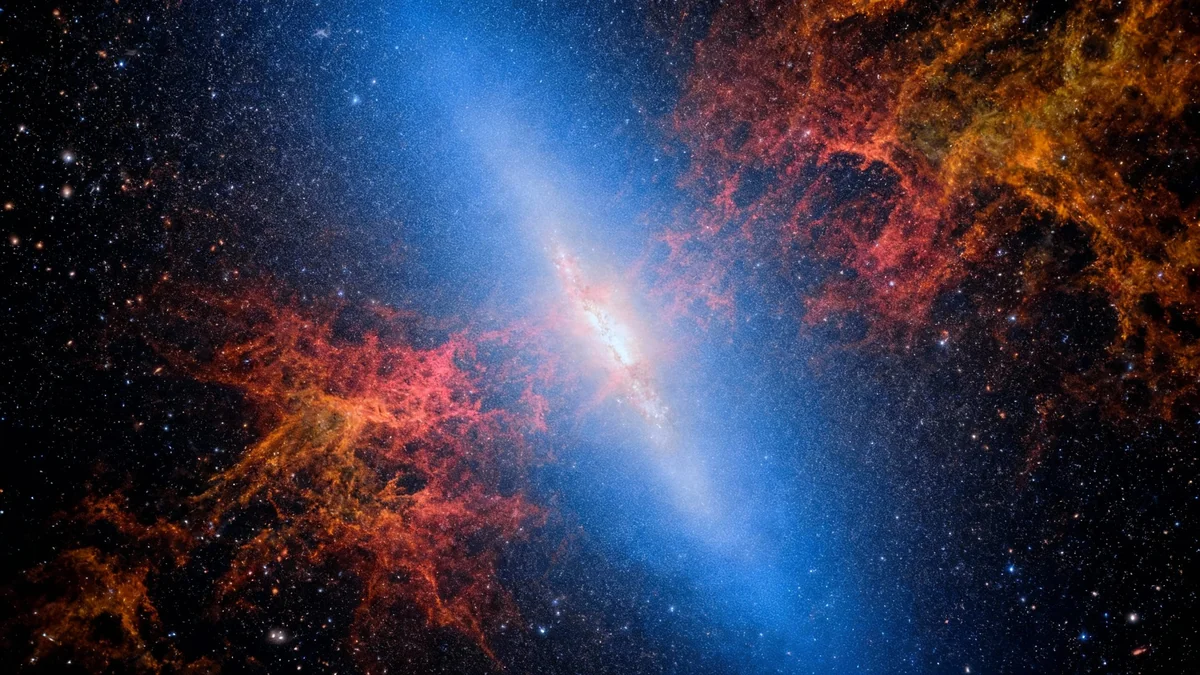An international team of researchers has uncovered a potential chemical pathway explaining how complex, soccer-ball-shaped carbon molecules, known as buckyballs, could form from simpler compounds in the vastness of interstellar space. The findings, derived from laboratory experiments simulating cosmic conditions, suggest that common molecules are transformed by space radiation into the precursors for these unique structures.
This discovery provides a critical clue to understanding the journey of carbon, a fundamental building block of life, from interstellar clouds to the formation of planetary systems like our own. The research was led by scientists at the University of Colorado Boulder.
Key Takeaways
- Researchers simulated space conditions to study how complex carbon molecules form.
- Common molecules called PAHs were exposed to electron beams, mimicking space radiation.
- The radiation caused the PAHs to lose hydrogen atoms and radically change their carbon structure.
- This transformation created molecules with both hexagons and pentagons, a key step toward forming spherical buckyballs.
- The results provide a 'fingerprint' for astronomers to search for these precursor molecules in space using telescopes like the JWST.
The Cosmic Carbon Puzzle
The space between stars, known as the interstellar medium, is not empty. It is a diffuse mixture of gas, dust, and a surprising variety of organic molecules. Among these are polycyclic aromatic hydrocarbons (PAHs), which are flat, honeycomb-like sheets of carbon atoms, and fullerenes, which are closed cages of carbon atoms.
The most famous fullerene is buckminsterfullerene (C60), a molecule of 60 carbon atoms arranged in a perfect sphere resembling a soccer ball. These "buckyballs" have been detected floating freely in space, but their origin has long been a mystery to scientists.
"We’re all made of carbon, so it’s really important to know how carbon in the universe gets transformed on its way to being incorporated in a planetary system like our own solar system," said Jordy Bouwman, an assistant professor at CU Boulder and lead author of the study.
While PAHs are abundant, a clear mechanism for how these flat molecules could curl up and form spherical fullerenes has been elusive. The new research, published in the Journal of the American Chemical Society, proposes a crucial intermediate step.
What Are PAHs and Buckyballs?
Polycyclic Aromatic Hydrocarbons (PAHs): These are molecules composed of carbon and hydrogen atoms arranged in fused aromatic rings, similar to a section of honeycomb. On Earth, they are commonly found in soot, smoke, and charred materials from combustion.
Buckminsterfullerene (C60): Named after futurist Richard Buckminster Fuller, this molecule is a type of fullerene with a structure resembling a geodesic dome or a soccer ball. It consists of 60 carbon atoms arranged in a pattern of interconnected hexagons and pentagons.
Simulating Space Chemistry on Earth
To investigate this cosmic puzzle, the research team designed an experiment to replicate the harsh conditions of the interstellar medium. They focused on two relatively small PAH molecules, anthracene and phenanthrene.
The experiment took place at the Free Electron Lasers for Infrared eXperiments (FELIX) facility in the Netherlands. Here, the scientists first bombarded the PAHs with a beam of electrons. This process was designed to simulate the effect of high-energy radiation that permeates deep space and interacts with floating molecules.
This initial step transformed the PAHs into new, charged molecules. The team then used the powerful lasers at the FELIX facility to analyze the precise structure of these new chemical products.
"This gives us a hint that the buckyballs that we find in space may be connected to these large aromatic molecules that are also abundant," Bouwman explained.
A Surprising Structural Shift
The results of the analysis were unexpected. When the electron beam struck the PAH molecules, it did more than just knock off one or two hydrogen atoms. It triggered a complete reorganization of the molecules' carbon skeletons.
The original PAHs were composed entirely of hexagonal carbon rings. After the radiation exposure, the resulting molecules were found to contain not only hexagons but also five-sided carbon rings, or pentagons.
The Power of the Pentagon
In carbon chemistry, geometry is everything. A flat sheet can be made entirely of hexagons (like graphene or a PAH). However, to create a curved surface that can close into a sphere, pentagons must be introduced. A standard soccer ball, for example, is made of 20 hexagons and 12 pentagons.
This radical rearrangement had never been observed before under these conditions. "That was a very surprising result—that just by kicking off a hydrogen atom or two, the entire molecule completely rearranged," noted Sandra Brünken, a co-author of the study and a group leader at FELIX.
This discovery is significant because the presence of pentagons is the essential structural feature needed to transform a flat sheet of carbon into a three-dimensional cage. The experiment effectively created the missing link between the abundant flat PAHs and the spherical buckyballs found in space.
A New Target for Telescopes
The findings from this laboratory experiment have direct implications for observational astronomy. The unique structural signature of these newly identified pentagon-bearing molecules can now be used as a chemical "fingerprint."
Astronomers can use powerful instruments, most notably the James Webb Space Telescope (JWST), to search for these specific molecules in interstellar clouds where stars and planets are forming. The JWST is particularly well-suited for detecting the infrared signatures of complex organic molecules in deep space.
"You can take our results from the laboratory, and then use them as a fingerprint to look for the same signatures in space," Brünken said.
If these intermediate molecules are detected, it would provide strong evidence that this radiation-driven pathway is a primary source of fullerenes in the universe. Such a confirmation would solve a long-standing mystery in astrophysics and deepen our understanding of the cosmic carbon cycle that ultimately led to the formation of Earth and the origins of life.





